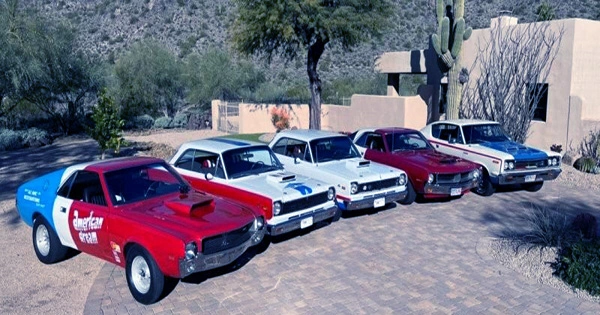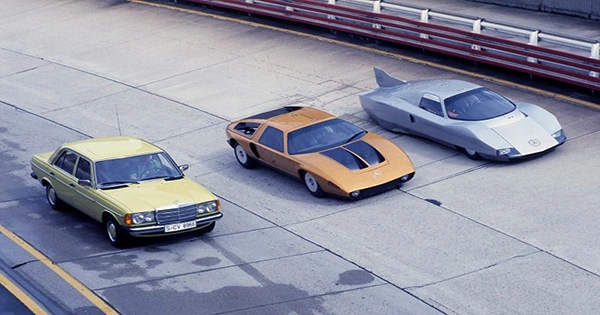The Post-Civil Rights Movement, which succeeded the Civil Rights Movement, the Gay Liberation Movement, the Anti-War Movement against the Vietnam War, and – of course – the political scandal that rocked America to its core all made much larger headlines during this time. Watergate is a pivotal point in modern history, with numerous significant incidents bearing the suffix “gate” after it. An example of a misstep that caused the Volkswagen Group to abandon its plans for turbo-diesel cars in favor of all-electric vehicles is the Dieselgate scandal.
Unfortunately, the West wasn’t doing much better either. This decade was terrible for many nations that were allied with the Soviet Union. Stagflation, which flipped Keynesian macroeconomic theory on its head, is characterized by high inflation, slow economic development, and high unemployment. On the plus side, the 1970s saw the invention of the business with the bitten apple logo by Steve Jobs and the other Steve, the introduction of the Space Invaders arcade game, and the invention of the Boeing 747 jumbo jet, which revolutionized commercial aviation.

How can we condense the 1970s into just five vehicles? Even though it might appear difficult at first, given the abundance of decade-defining events available to us, it’s really not that difficult. Since you’re on auto evolution, we’ll start this section with a technology that is extensively used right now as a result of increasingly strict emission regulations.
Porsche 930 Turbo – Turbochargers Going Mainstream
With the first prototype completed in 1915 for aircraft engines rather than automobile engines, the turbocharger was invented in 1905 under the guise of a patent. Oldsmobile Jetfire and Chevy Corvair Monza from 1962 are regarded as the first vehicles to use turbocharging, though Porsche’s 930 did more to spread the word in the 1970s.
This Neunelfer model is referred to as the Turbo Carrera in 911’s sales pamphlet. Less than 3,000 of the 3.0 liter boxer-equipped 930s were sold between 1975 and 1977. In 1978, a slightly bigger engine was added. In 1989, when the G model (911s from 1973 to 1989) was replaced by the vastly improved 964, production finally came to a grinding stop.
Turbocharging became widely used in the 1970s for a few additional reasons in addition to major technological advancements since the 1960s. To begin with, the 1973 oil crisis and subsequent events compelled many manufacturers to investigate forced induction to improve their engines. But more significantly, the Environmental Protection Agency gradually reduced the amount of lead in American gasoline and mandated that passenger cars have catalytic converters beginning with the 1975 model year, ushering in the dreaded Malaise Era.
Dodge Omni – The Oil Crisis
The Chrysler L platform, a front-wheel-drive architecture with tenuous ties to a French economy vehicle from the 1960s, was first seen in the Omni and Plymouth-branded Horizon. The first energy crisis gave rise to the Dodge Omni and Plymouth Horizon. In the United States of America, where unibody vehicles are still frequently front-wheel drive to this day, the first domestically produced FWD economy automobiles contributed to the spread of this design.
Chrysler didn’t get the criticism it merited for drawing design cues from the VW Rabbit (also known as the Golf Mk1) of the time. Although the Omni and Horizon aren’t collectible, they assisted Chrysler in getting through a very trying time as the Big Three’s third-largest American manufacturer in Detroit.
The oil shock of 1973 also demonstrated that the Organization of Petroleum Exporting Countries is motivated by business and another, slightly more unsettling, factor. That something else made it necessary for Nixon and succeeding governments to depend on oil from OPEC less and less. The world’s most potent economy is anticipated to turn into a net exporter in 2023, with United States crude oil exports averaging 3.6 million barrels per day in 2022.
Ford Mustang II – The Malaise Era
The Malaise Era and the end of the muscle car era both began with the introduction of the 1974 model year in the autumn of 1973. Even though the era’s federally required bumpers were unappealing to car enthusiasts, other factors like constrictive exhaust systems, lower compression ratios, and delayed ignition timing completely turned them off of all things involving four wheels. It didn’t help that the nationwide speed limit is 55 mph (nearly 89 kph).
Funny how Germany produced so many high-performance vehicles in the latter part of the 1970s, when the American car industry was, dare I say it, in the dumps. As destiny would have it, the Malaise Era came to an end slowly but surely thanks to technological advancements like electronic fuel injection. Additionally, the three-way cat and oxygen monitor were useful here.
The Mustang II King Cobra, one of the most aggressive vehicles from that dark time, is represented above in the 1978 model, one of about 4,300 vehicles that year with the King Cobra package. In 1978, a 139-horsepower V8 engine was available for the Mustang II, which was otherwise emasculated by sharing its chassis with the Pinto.
R107 Mercedes SL – Women’s Rights Gaining Momentum
In 1920, Amendment XIX gave women the ability to vote. Nearly 50 years after it was passed, about 50,000 women gathered in New York City for the Women’s Strike for Equality March on Fifth Avenue. Roe v. Wade, which resulted in a Supreme Court decision declaring that women have the right to have an abortion, was one of the most significant events for women’s rights in the 1970s.
In the 1970s, feminism made a huge impact, and both small and large-screen media frequently featured strong female characters. It makes me think of Lynda Carter as Diana Prince in the 1975–1979 television series Wonder Woman, a representation of the bravery, resiliency, and fortitude of women.
In her roles as Diana Prince and Wonder Woman, Lynda Carter operated a variety of cars, both luxurious and feminine. The Mercedes-Benz 450 SL from the R107 generation, with the model year of 1975, is the one that has really stayed with me. The Boonie Buggy would come in second, in my opinion, since it is a superhero story.
La Dalat – The Fall of Saigon
After the 1973 oil crisis, the United States of America had a number of domestic issues to deal with. Nixon’s resignation was compelled by the Watergate affair in August 1974. The Communist Party of Vietnam’s Politburo felt empowered to expel the last of the ARVN and American troops from South Vietnam as Gerald Ford oversaw the worst American economy since the Great Depression. They accomplished this with a significant offensive in March 1975, during which the North’s commie forces quickly captured Da Nang, the second-largest city in South Vietnam.
The biggest helicopter evacuation in history took place before Saigon fell on April 30th, 1975. There are many squared-off vehicles on Saigon’s streets that aren’t American military jeeps in the video of that embarrassing moment for the United States of America.
The La Dalat, a Citroen only in name, is here. The La Dalat was only produced in series for five years, and it was built on the 2CV and Mehari’s A-series base. With a 25:75 ratio of locally made parts, the first civilian car to be mass-produced in Vietnam went into production. The number rose to 40:60 in 1975, when the last member of the breed left the Saigon Automobile Company’s production line.















